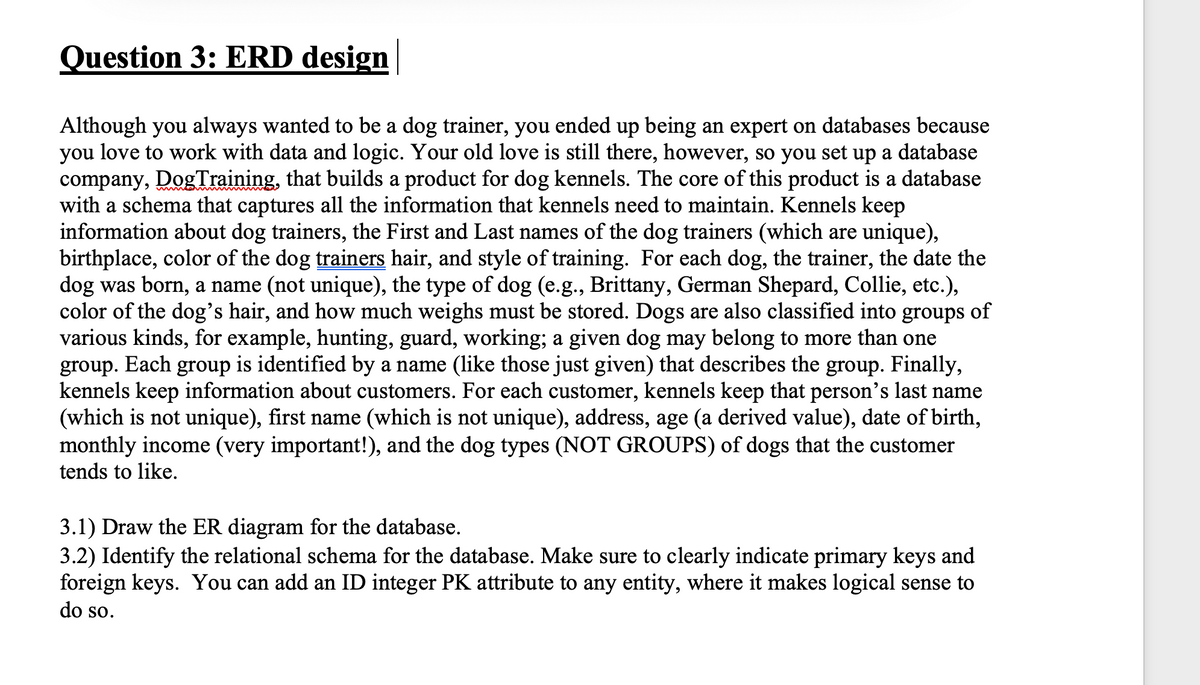Question 3: ERD design Although you always wanted to be a dog trainer, you ended up being an expert on databases because you love to work with data and logic. Your old love is still there, however, so you set up a database company, DogTraining, that builds a product for dog kennels. The core of this product is a database with a schema that captures all the information that kennels need to maintain. Kennels keep information about dog trainers, the First and Last names of the dog trainers (which are unique), birthplace, color of the dog trainers hair, and style of training. For each dog, the trainer, the date the dog was born, a name (not unique), the type of dog (e.g., Brittany, German Shepard, Collie, etc.), color of the dog's hair, and how much weighs must be stored. Dogs are also classified into groups of various kinds, for example, hunting, guard, working; a given dog may belong to more than one group. Each group is identified by a name (like those just given) that describes the group. Finally, kennels keep information about customers. For each customer, kennels keep that person's last name (which is not unique), first name (which is not unique), address, age (a derived value), date of birth, monthly income (very important!), and the dog types (NOT GROUPS) of dogs that the customer tends to like. 3.1) Draw the ER diagram for the database. 3.2) Identify the relational schema for the database. Make sure to clearly indicate primary keys and foreign keys. You can add an ID integer PK attribute to any entity, where it makes logical sense to do so.
Question 3: ERD design
Although you always wanted to be a dog trainer, you ended up being an expert on databases because you love to work with data and logic. Your old love is still there, however, so you set up a
3.1) Draw the ER diagram for the database.
3.2) Identify the relational schema for the database. Make sure to clearly indicate primary keys and foreign keys. You can add an ID integer PK attribute to any entity, where it makes logical sense to do so.

Trending now
This is a popular solution!
Step by step
Solved in 3 steps with 2 images









